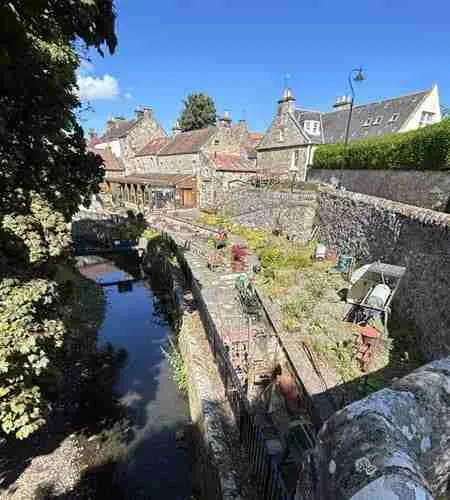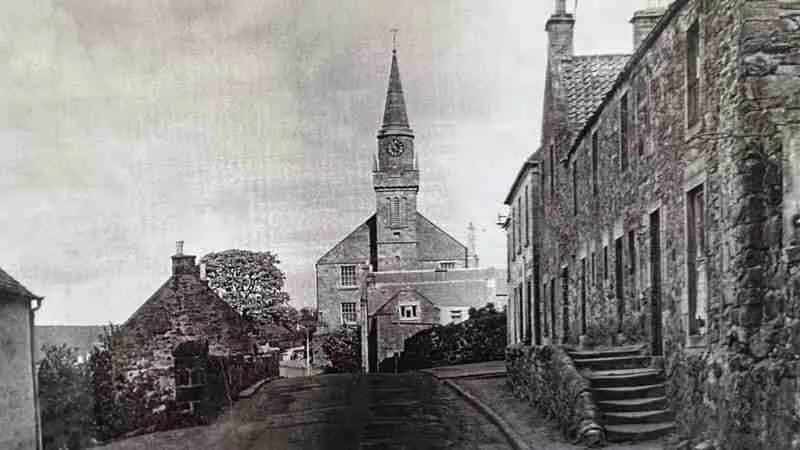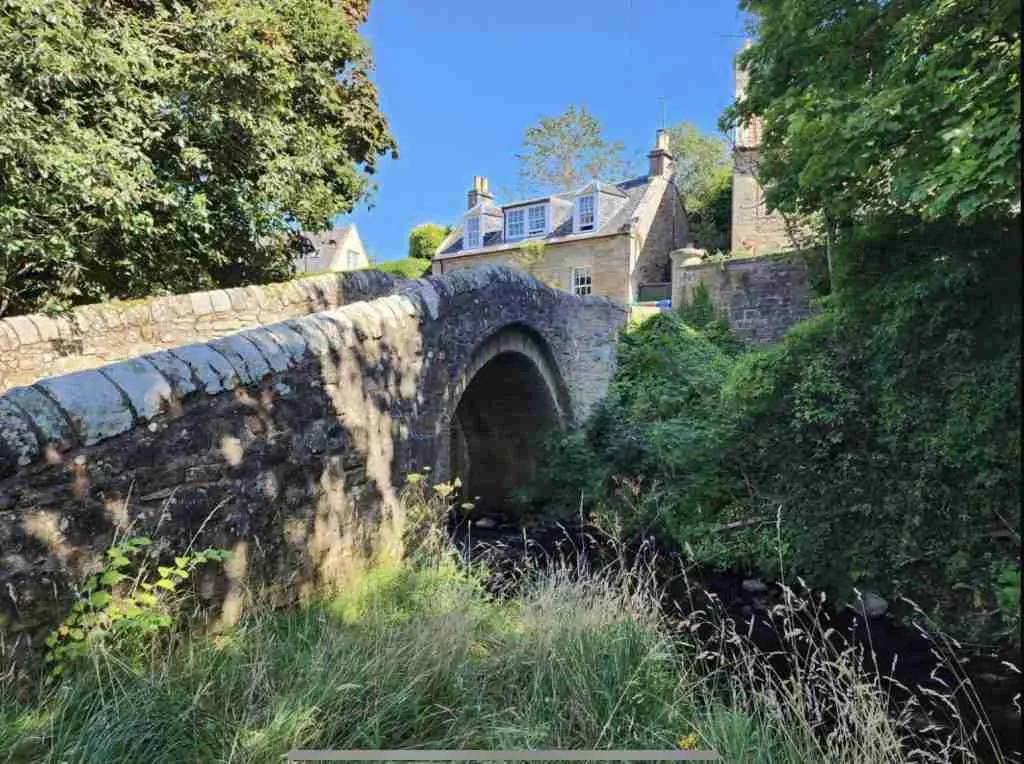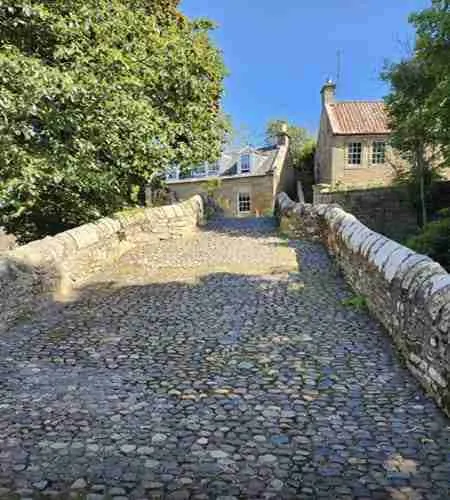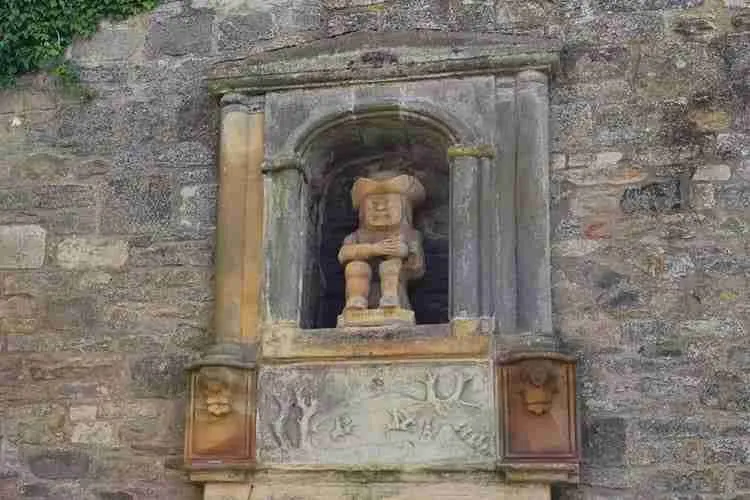Ceres village is charming. Located in the countryside of Fife, it offers a mix of history, culture, and natural beauty.
Join me as I take you through this quaint little village as part of my series on Scottish villages.
Meaning of Ceres
Like other Scottish villages, Ceres has roots that stretch back to medieval times. The village’s name is believed to come from the Celtic word caer, meaning “fort”. Interestingly the Medieval Latin word Syres means “marshy ground near a running stream”. Actually there is a gentle stream that passes through the village.
Ceres parish church
One of the oldest landmarks in Ceres village is the parish church dating back to the 12th century. Despite several restorations, the church has retained much of its original charm, standing as a testament to Ceres’ long standing heritage.
17th century bridge
Ceres village also features an 17th century stone bridge which was the on the main route to St Andrews. It was named Bishop’s Bridge because it was where Archbishop Sharp stopped to smoke his pipe in May 1679. Sadly, 9 covenanters lay in wait and murdered him between Ceres and St Andrews as he made his way home.
Toby-Jug in Ceres village
Ceres is best remembered for the toby-jug figure of the Provost of Ceres. The sculpture is a quirky caricature crafted by local stonemason called John Howie. The figure is thought to represent Reverend Thomas Buchanan. He was the last ecclesiastical provost appointed to Ceres from St. Andrews in 1578 by King James VI. A provost is someone similar to a mayor.
The figure was originally above a fireplace at Kirklands, which is now the church’s car park in Ceres. It was sold to a Cupar merchant in 1933. By 1939 it had returned to Ceres, where it now resides in a niche at the Crossroads.
19th century weaving
By the 1850s, Ceres was a thriving small village with many inhabitants involved in the linen weaving trade as weavers. There were also yarn winders and bobbin winders.
For those interested in learning more about the local history, a visit to the Fife Folk Museum is a must. Located in the heart of the village, the museum offers a fascinating glimpse into rural life in Fife over the centuries. The museum is located in well preserved 18th century weavers cottages. Rural life is exhibited from traditional farming tools to everyday household items. You will get a sense of what life was like for the people of Ceres and the surrounding area.

Ceres village Highland Games
One of Ceres’ most celebrated traditions is the Ceres Games, Scotland’s oldest free Highland Games, which dates back to 1314. Legend has it that the games may have originated from a race organised by King Malcolm III in the 11th century to find a royal messenger.
The village proudly holds the title of the oldest continuous Highland Games. In fact, there were only a few interruptions during the Act of Proscription (1746-1782), the World Wars, and the COVID-19 pandemic in 2020. Traditionally held on June 24th to commemorate the Battle of Bannockburn, the games are now celebrated on the last Saturday of June. They feature traditional events such as caber tossing, tug-of-war, and piping competitions.
Fife coastal path
For nature lovers and walkers, the Fife Coastal Path is just a short drive away, offering breath taking views of the coastline and access to some of Scotland’s most stunning scenery. Whether you’re a seasoned hiker or simply looking for a leisurely stroll, the paths around Ceres provide the perfect escape into nature.
In Summary,
Ceres village in Scotland is more than just a pretty place. It is a living piece of history, with medieval roots, historic landmarks, and a thriving textile trade from the 19th century. The Ceres Games add to its lively traditions. So, take a walk through its charming streets and cobbled bridge while connecting with your ancestors.
Thank you for joining me on an another historical journey into a Scottish village.
Please remember to leave a comment below and if you want me to write about a Scottish village or town, then let me know.
Good luck with your Scottish family tree.
Until my next post, haste ye back.
Enjoyed this post?
Keep up-to-date with my latest posts and tips below:
We hate SPAM & promise to keep your details safe.
You may also like...
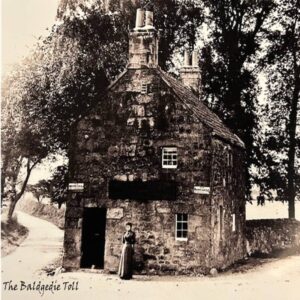
The Life of a Tollkeeper
A tollkeeper was a person who collected road fees from travellers. This old occupation was prominent during the 18th and 19th centuries.

Cameron Surname: Origin, Meaning & History
The Cameron surname has Gaelic origins and it is associated with Clan Cameron, one of the most influential Highland clans.
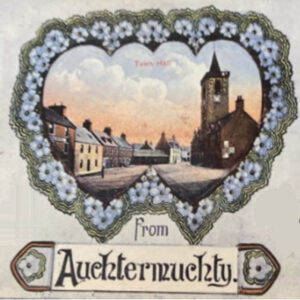
Ancestral Visit to Auchtermuchty, Fife
Auchtermuchty in Fife is known as Muchty to locals. What does Stratheden Whisky, Jimmy Shand and the Proclaimers have in common?
